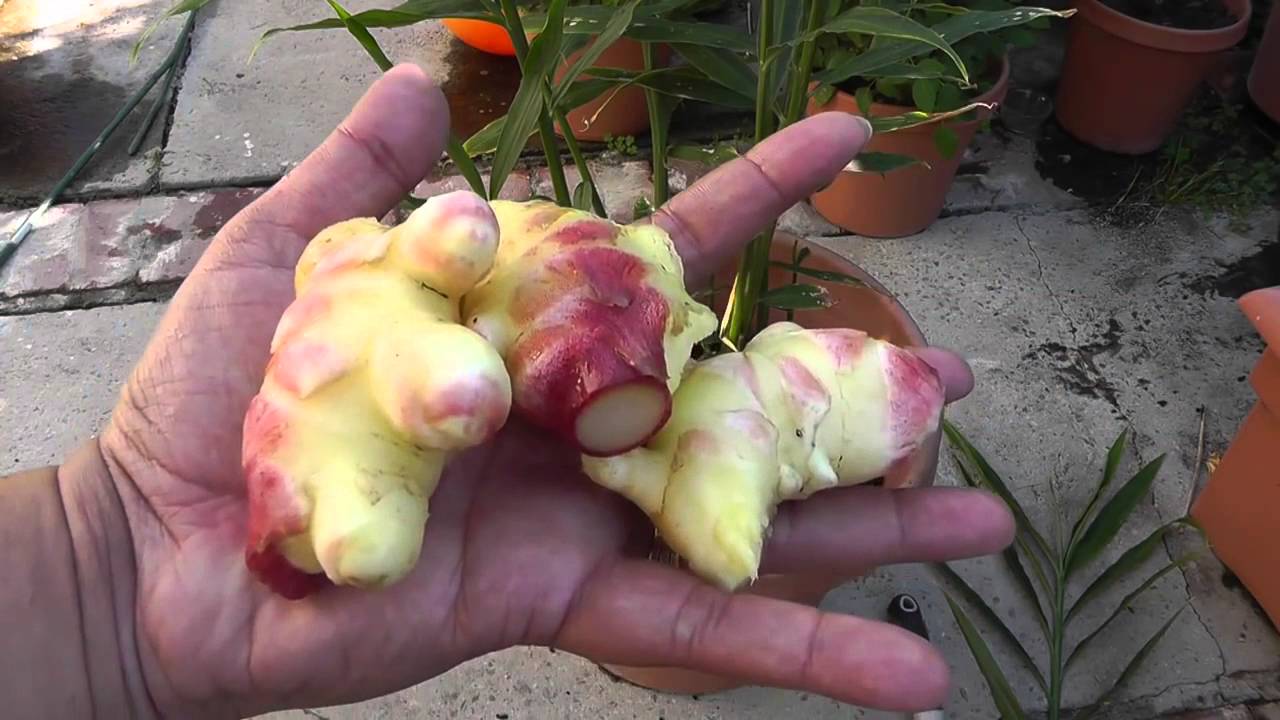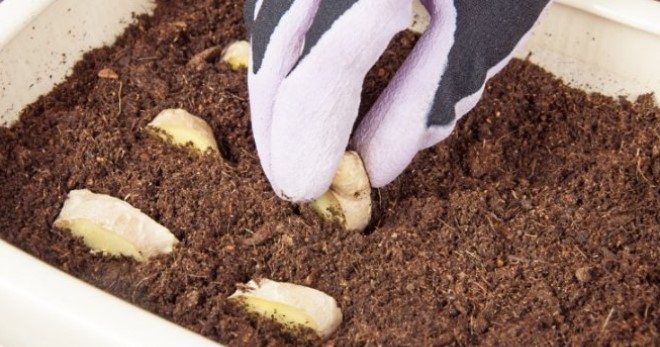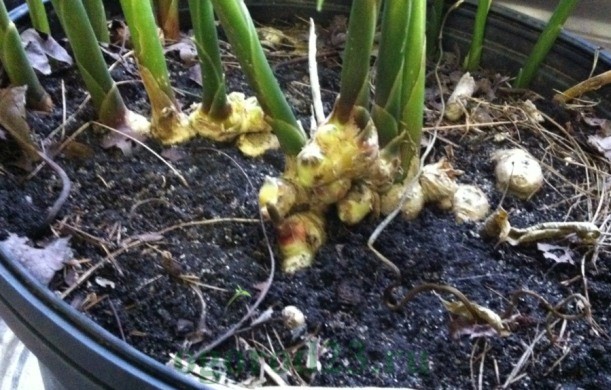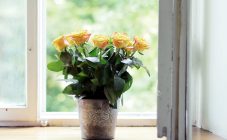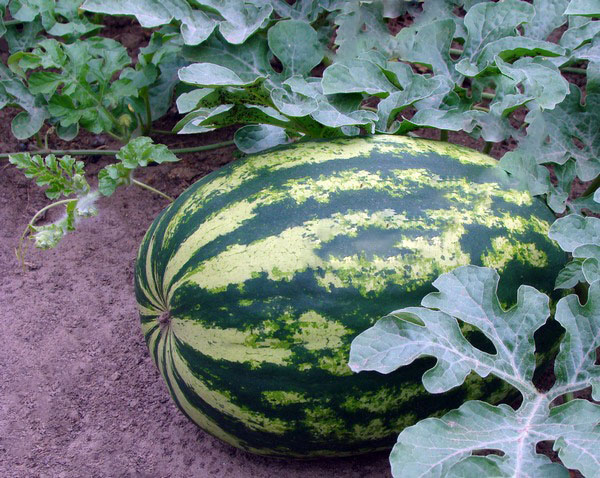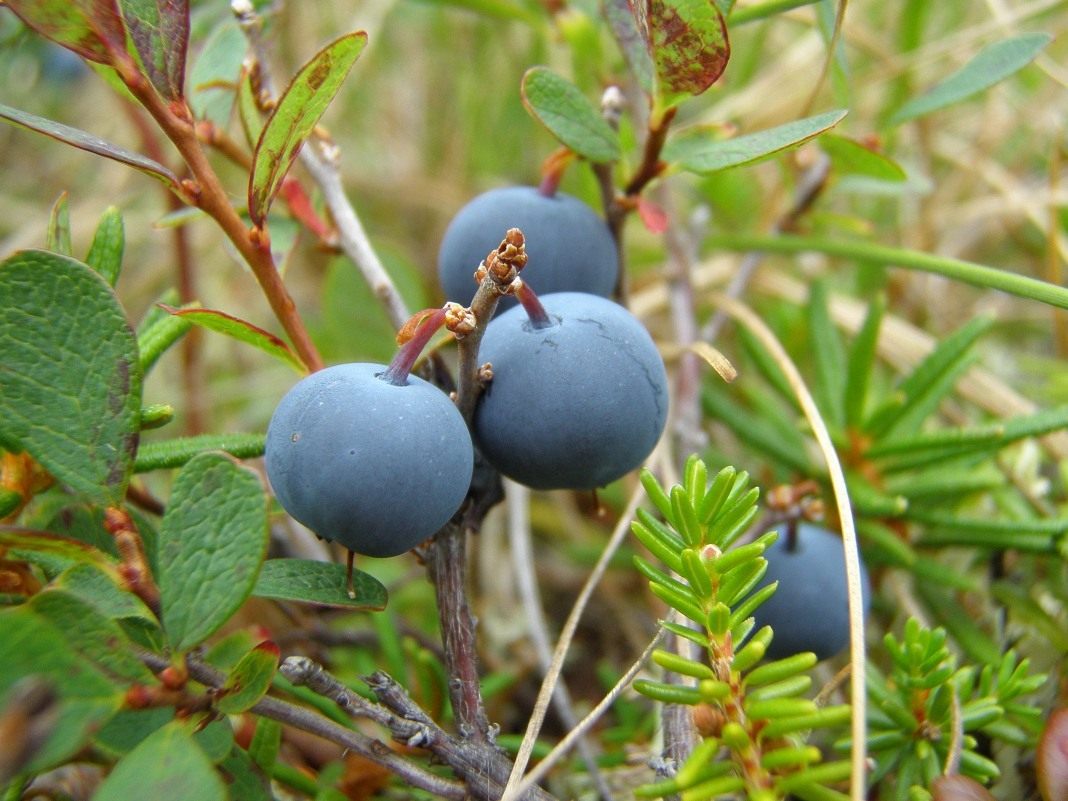Content:
Famous to many, ginger is a subtropical crop adapted to grow on open soils in the hot regions of South Asia. Anyone who is used to judging this culture only by its juicy roots should know that by its origin, ginger belongs to the class of perennial herbaceous plants.
Description of culture
Its height usually varies from 50 to 100 cm, and it itself has lanceolate leaves covered with thin skin and a red inflorescence similar to an ear. The successful reproduction of branched ginger tubers is possible only under the following conditions:
- In the place where it is supposed to grow ginger within the apartment, there must be a sufficient amount of heat and diffused light;
- Before planting ginger, you should ensure that the tubers are constantly exposed to these factors (for about two days);
- Another mandatory requirement is the possibility of constant watering and the availability of a suitable nutrient soil for the plant.
Based on this, growing ginger on a loggia in the Moscow region, for example, is a real gift to all lovers of breeding domestic plants.
Such an activity can be perceived as a very real or potentially possible option for realizing their preferences by each of the gardeners.
Breeders and hobbyists know many varieties of plants that differ in the following characteristics:
- The color of the rhizome, which can be either light green with a slightly yellowish tinge, or pale yellow with thin veins, slightly greenish in appearance;
- Its configuration (slightly elongated or similar to a fist, horns, hand, etc.);
- By the odor emitted by the fruit (with the scent of lemon or grass).
All these species, the breeding site for which the apartment was chosen, have one common property concerning the taste of the roots (they have a characteristic pungent taste).
If it is decided that the house becomes the wintering place for the plant used for decorative purposes, you should wait one year, and then transplant the rhizome growing in the garden into a pot. This limitation is due to the fact that it is capable of blooming only in the second year and only where it will be spacious enough (its height can reach one meter).
To successfully germinate ginger from the root, you will need to first select it and thoroughly study the breeding rules. It should be noted that the following varieties are best suited for the designated purposes:
- Zerumbet (with flowers very reminiscent of roses);
- Japanese ginger (early flowering and attractive aroma);
- A variety called "Wonderful", which forms a bright scarlet flower garden;
- Kasumunar (plant with white orchid-like flowers).
Most of these species, first of all, are distinguished by long and very beautiful flowering and can become the basis for planting a decorative flower garden at home. At the same time, all of them are able to give a fairly rich harvest in the form of rhizomes that are especially valuable and useful in use.
Beneficial features
Anyone can buy ginger roots these days, as they are freely available in retail.But many garden crop lovers dream of growing it on their own, since the main secret of this spicy root is in its unique medicinal properties.
All of them are explained by the fact that ginger contains a large number of trace elements, as well as many vitamins. At the same time, it acquired its unique aroma due to the essential oils contained in its root part. Medicines and tinctures made on the basis of ginger help with a number of chronic diseases, namely:
- In certain doses, they are taken to restore the digestive system (in order to normalize the work of the gastric tract and prevent indigestion);
- When viral or colds are detected, the medicinal root helps out with its ability to resist inflammatory processes, while strengthening the patient's immunity;
- With regular and dosed intake of food, drugs based on it block the process of blood clots, that is, it is an excellent means of protecting against stroke (the main thing is that the technology of their preparation is followed);
- For women, ginger root is useful in that it helps in the treatment of an ailment such as infertility, and also alleviates the condition of pregnant women during toxicosis.
Note that the above list is only a small part of the problems that this wonderful product is able to cope with. All the intricacies of how to grow ginger at home will be discussed below.
Breeding features
Answering questions about how to get ginger by growing it at home, it should be noted that this culture can be grown both in the garden and within the house (by adapting a window sill for these purposes, for example).
When cultivated within an apartment, ginger is usually planted in winter or at the very beginning of spring. It is planted in a sufficiently soft, well-loosened soil, which will allow the sprouts to freely punch their way up.
A pot of suitable size or any other container used for this purpose must have a sufficiently wide bottom, which is associated with the peculiarities of the development of the plant's root system. This is explained by the fact that the root tuber develops more in breadth during growth, filling all the free space.
Before planting ginger in a container prepared in advance for it, a layer of expanded clay drainage is poured onto its bottom, no more than 4-5 cm thick, and then the earth is laid. It is allowed to use a special soil, mixing it in equal proportions with turf, sand and adding deciduous humus to them.
Landing technology
Before you can grow ginger at home, you need to find the correct and only correct method of planting it.
Before growing ginger fruit at home on the balcony, the most important thing is to responsibly choose the source material (that is, the root or tuber, which, first of all, should not be overdried). In addition, it must have small sprout buds (the so-called "eyes").
When planted in the soil in the southern regions, ginger prefers places where there is partial shade, as well as areas that are illuminated by the sun from morning to noon. In addition, the planting area should be protected from the wind, and the soil in this place should be moist and well heated.
We add that ginger is a light-loving plant, but, on the other hand, direct sunlight falling on an open garden area can be destructive for it.
Indoors, ginger grows very slowly, if you are very lucky, its sprouts can form in a few days (usually you have to wait at least two weeks).
The root should be planted to a depth of about 3 cm; while the eyes on it are necessarily located on top. Next, you need to sprinkle it with earth, and then pour water on this place. After 13-14 days, the root should sprout, which should not be poured, leaving them moderately moist.
Care and cleaning
After the ginger is planted, the most important thing is to provide root care, which involves regular watering, however, in strictly limited doses. Competently caring for this plant means, first of all, carefully monitoring the condition of the soil, preventing it from severe waterlogging and drying out.
During the active growing season, ginger must be fertilized with a mullein prepared according to the classical scheme (1 part per 10 servings of water, introduced about 1 time in 3 weeks), and also moistened with a spray bottle. The month of August is the time of completion of the active phase of the formation of root crops, after which they no longer need intensive care.
In conclusion, we note that by the end of autumn, when the ginger stalks begin to turn yellow, the frequency of watering should be reduced to a minimum, and then the moisture should be completely stopped. After the ground part is completely dry, you can start digging out the tubers of the plant.
